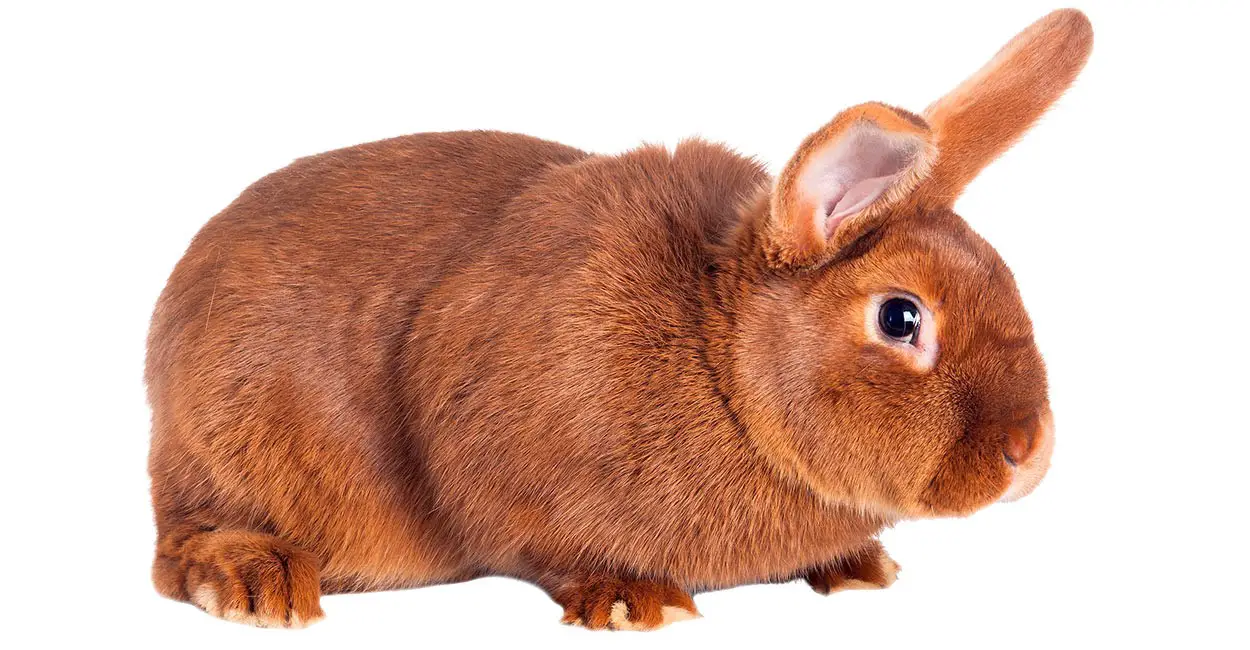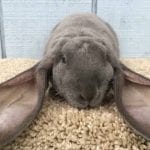Scientific Facts
| Common Name | New Zealand Red Rabbit |
| Body Shape | Semi-Arch/ Mandolin |
| Size | Medium – Large |
| Weight | Average body weight is 5 kg |
| Life Span | 5 – 8 years |
| Country of Origin | United States |
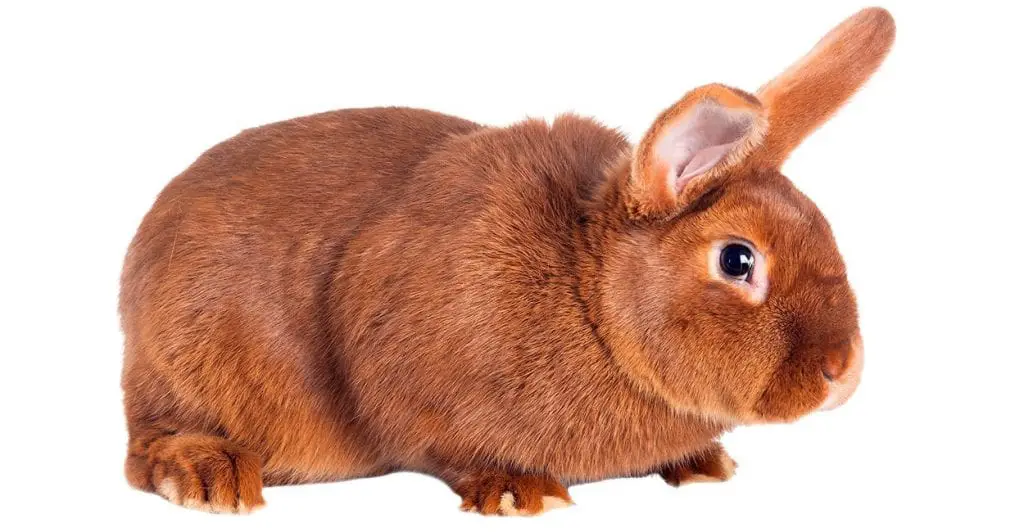
Their origin is bound in including Belgian Hares much stronger than it is with a New Zealand strain of bunnies.
At the shift of 1900, Belgian Hares were all the passion in the bunny realm. They were being bred everyplace in Europe, Belgium, England, and the USA. Notable unique bunnies were purchased and marketed for thousands of bucks respectively in those ages.
Granted the whirl of reproducing, it is not shocking that Belgian Hare ‘pleasures’ started bestowing up in different places, bright red and cream-colored rabbits requiring the accurate rodent pigmentation of a typical Belgian Hare.
Physical Description
The New Zealand Red rabbits measure between 2.9 to 4.5 kgs and are deemed to be a giant breed. They are thickly and sturdy built, with a semi-arched body form, which may signify their major distinction from the market developed New Zealand Rabbits- aside from the discrete shade of their fur. Their upright, long ears are in symmetry with the rest of their frame and the curvy head.
The flyback, short hair of New Zealand Red rabbits, delivers them particularly unchallenging when it gets to currying. Their fur is of the standard model and not too delicate, so grazing won’t be a burden: running within their hair with a stroke every week will be larger than enough to have these rabbits tidy and neat. Absolutely, as every bunny breeds, New Zealand Red rabbits will cost more during the shedding period and will demand more regular brushing throughout that season. Although not unusually soft and silky, the coat of these bunnies is not harsh or boorish to the sense- caressing them appear pleasant!
Colors
The title New Zealand Red explicitly declares what color these bunnies appear in: solely red coloration of the hair is provided for this breed. And it’s not a flat light reddish-brown, either. These bunnies boast a magnificent fur color of dark, vibrating cinnamon-red shade, without any markings or patterns. Their abdomens are buttery umber, and they possess brown eyes.

History
Howbeit their alias implies it these bunnies are not truly from New Zealand. In reality, they are the primary American rabbit breed to be produced. At the start of the 20th century, American breeders hybridized the famous rabbit varieties from the ‘traditional land’ in beliefs to generate a meat-producing, display class bunny. By 1913, their hybrids with genes of Flemish Giants and Belgian Hares were achieving notoriety following the name of New Zealand Red Rabbit. Promptly after, the albino sports of the strain were produced independently. The initial litter of what will grow New Zealand White bunnies were produced in 1917 when a New Zealand Red female had four white kittens. The extraordinary charm of these classic albino sports with red eyes urged the breeder to attempt and recreates them through particular breeding. Subsequent to that, the rest is a memoir.
Common Behavior
Since the New Zealand Red rabbit was produced to be fur/meat generators, they are commonly humble and calm to control. Though must you determine to have New Zealand as a pet, they are usually great with kids and other pets provided that they are granted ease to accurately mingle at an early age. They appreciate being touched and are fairly laidback, which presents them with an excellent household pet for partners who have older or younger kids.
These rabbits are likewise friendly and calm, addressing them famous beginner pets as well for seniors, singles, or couples who are seeking for a fuzzy mate to retain them socialize. This breed of a bunny is not perceived to snap, thrust or be an inclusive competitive and admires to be plucked up or carried on thighs while they are caressed and admired – they are also frequently termed “rag dolls” since they slump similar to an exact scrap figure wherever you placed them down.
Just as they are not perceived to snap, all bunnies must be provided some dolls they can gracefully bite, morsel, and chew to lessen monotony and perhaps have their teeth short and nice. Hinging on your rabbit’s nature, this can be as easy as a clear habit of pantry paper napkins too as intricate as a rational encouragement pet pastime from your local pet shop.
While not the most peaceful indoor pet to exercise, it is certainly reasonable to litter mold a bunny. Numerous keepers affirm having various litter crates scattered across the room is a crucial disaster for their indoor bunny not to drop their excrements all across their house. They likewise discover that if their bunny is inclined to taking action in one distinct edge, they set a litter crate in that edge so the bunny can create the bond and learn that they must be doing their business in the crate. With loads of patience, time, and some treats, litter training must be thriving within several months.
Reproduction and Life Cycle
Notwithstanding the designation, New Zealand rabbits were initial produced in America in 1916 for fur and meat production and are presently the leading meat bunny in the United States. W.S. Preshaw original reproduced it with his idea to create a bunny that would be desirable not solely for meat but likewise for wool. The starting breeds utilized to produce the New Zealand breed are anonymous.
They arrive in various distinct colors (white, black, and red) though white rabbits are the most prevalent for meat stock due to their huge, wide, and muscular builds and the easy of pairing their wools for trade.
When grown, males balance 3.6-4.5 kgs and females from 4-5.4 kgs. New Zealand rabbits are set to butcher as fryers following merely 2 months. Their standard litter is 8-10 bunnies. The normal munching percentage at 8 weeks (on commercial grain intake) is 55.9%, at 13 weeks 59.2%, and at adulthood 58.2%. The bunnies who possess high-grade wool are employed to create fur coats and clippings, while those with lower standards are adopted to make felt glove linings and hats.
Life Span
A healthy New Zealand Red pet bunny can exist for up to 10 years. Generally, the New Zealand white rabbit existence varies from 7 to 10 years.
Breeding
A female rabbit (doe) becomes prolific within 8-12 weeks of span and can be securely reproduced at 16-17 weeks of age. Mating before this age can induce injury or loss to the female and/or babies. Females are produced annually, although day period can influence that some. The pregnancy stage is approximately 28–35 days, although most will give birth (kindle) at 31-32 days. A cradle crate must be given for the new parent two to five days before the anticipated kindling moment. The female will extract hair from her tummy and jawbone, and along with grass or other stuff granted, she will build a lair. The juveniles are produced visionless, hairless, and deaf.
Wool starts to develop in by age 3 to 5, and following 7 to 10 days, the kittens’ eyes will unshut, and by 2 weeks, they may start searching and examining outside food origins. In the span of three to four weeks, their mother will start to detach them off milk; meantime, the kittens will shift to munching pellets and hays. The common figure of rabbits per litter is seven though generally extend from one to fourteen. Since bunnies are provoked ovulators, a female can get gravid by the mere exploit of coupling if circumstances are accurate. A female can become gestating inside 24 hours following delivering birth.

Cannibalism is uncommon, although it can befall. In the native, it is a protective mechanism to eliminate all dead tissue and blood from the dwelling space to evade exposure from predators. If juveniles are miscarried or perish after delivery, numerous events, the female will swallow the excess. Cannibalism can likewise be carried on by a drastic loss of feed and fluid. Males have limited to a negative role in fostering the juvenile. They behave in some circumstances, serve as nannies, and a warmth source for the juvenile kittens in group contexts identified as a colony. Contradictory to a widespread idea, males do not murder and devour kittens under typical conditions.
Pet Care
Feeding
Hay is a basic food for New Zealand Red rabbits. Hay gives the necessary nutrients that your bunny requires, and it likewise aids to dwindle her teeth, which never cease developing. Get sure that your New Zealand rabbit constantly has access to an extensive stock of raw hay. Present her new fresh hay least once per day and monitor now and later to examine if she demands more.
Plain grains can likewise present your New Zealand rabbit with some nourishment, but bunnies solely demand a little number of grains each day. Restrict your rabbit’s grain consumption to approximately ¼ cup per day.
For a larger rabbit or for a rabbit that is not increasing density accurately, you may require to extend more than ¼ cup per day. Verify with your doctor for a suggestion reliant on your bunny’s size and other requirements.
Deep leafy greens likewise give your bunny with a reliable origin of nourishment, and your bunny will savor gnawing on these. Strive to supply your New Zealand rabbit a few bits of dark leafy greens each day. A few dark, leafy greens that your bunny may relish include turnip greens, mustard greens, kale, parsley, collard greens, cilantro, and basil.
New Zealand rabbits love to munch on crispy veggies, seeds, and fruits, so strive to give a crispy feast once per day. Some great choices for your New Zealand rabbit include carrot slices, hulled sunflower seeds, and apple slices.
Your New Zealand rabbit regularly demands to have access to fresh, clear water. A sipper container is perfect for your bunny since it will not scatter or get dust or excrements in it like a water vessel. That implies that you won’t need to deal with a tumbled bowl of water or a course that your bunny has tainted with excrements.
Some meals may induce your bunny to swell or form up gas, and must solely be supplied to it in little amounts. These varieties of foods include cauliflower, cabbage, spinach, Brussel sprouts, and broccoli.
Housing
New Zealand rabbits are of average size, and they require loads of space to play and hop. Get sure that you give your New Zealand rabbit with an enclosure that is at least 76.2 cm (30 inches) long by 60.9 cm (24 inches) wide by 45.7 cm (18 inches) high.
- Do not take a cable support coop because these sorts of enclosures can injure your rabbit’s paws. Pick a coop that has a firm alloy base instead.
- Dog enclosures also serve well as rabbit cages. A dog enclosure will provide your New Zealand rabbit plenty of areas to bounce around.
- You may likewise contemplate taking a distinctive bunny condo cage. These kinds of cells have lots of concealing spots and holes for rabbits to search and savor.
Rabbits like to sneak each now and then to consider more protected. Strive to append a wooden nest box or a cardboard box to your rabbit’s enclosure so that she can escape if she seems apprehensive or terrified.
If you don’t desire your New Zealand rabbit peeing and excreting all over the enclosure, then you can install a tiny litter carton on the edge of your rabbit’s enclosure. Stuff the litter carton with some layers of newspaper and then place a few blades of grass over the newspaper. Empty the bulk of the carton once per day and replenish it with new stuff.
- If your New Zealand rabbit is not utilizing her litter carton, then work transferring the litter carton to the edge that she is adopting as a potty place.
- Strive to install a few litter crates around your home so that your bunny can employ them as necessitated.
- Never use pine or cedar peelings in your rabbit’s litter crate. These substances may induce your bunny to generate liver and respiratory problems.
If you have your bunny outdoor, then she will stand in danger of early loss for a diversity of causes. Rabbits do not succeed well outside since they are inclined to hypothermia and blister, they scare quickly, and they demand friendship.
- Still, if predators cannot obtain passage to your bunny in her enclosure, she may possess a heart assault from fright.
- A pet bunny retained outdoor may exhibit antisocial behavior concerns, such as hostility, so having a rabbit outside will address it toward a feeble pet.
Health
To remain healthy, bunnies require plenty of activity. Make certain that your New Zealand bunny takes at least two hours of training every day. To enable your bunny to move and bounce enough to get training, you will demand to allow her outside of her enclosure to at least once per day.
- Have your rabbit indoors when you permit her out to run. You may still need to hold her imprisoned in one place. For instance, you could have her in your room or set up a pair of baby barriers in getting sure she remains in a particular space of your home.
New Zealand Red bunnies will munch on any strings they find. This can execute your bunny and destroy your electronics, so it is essential to halt your New Zealand bunny from acting so.
- Attempt concealing electrical fibers with some firm synthetic piping or rolled cover. An added alternative is to merely have all of the strings off of the area so that your bunny cannot touch them.
Make certain that your bunny does not bite on your partitions and movables. A New Zealand rabbit will munch on any wooden matter. This may involve table legs, chairs, door edges, and wall trim.
- Retain in mind that your New Zealand bunny might likewise strive to nibble on other elements such as a bit of loose wallpaper, a rug, or some loose carpeting.
- If you discover your bunny munching on a material that she must not be biting on, don’t become enraged or beat him. Merely pull him up kindly, leave him somewhere different, and give him a cardboard crate or a bit of a fresh carrot to divert him from the other material.
Your New Zealand Red bunny’s teeth will never cease developing, so she requires to remain gnawing on things to decrease them down. Or else, your bunny may demand an appointment to the doctor to have her teeth scraped. To circumvent the call to clip your rabbit’s teeth, make certain that she possesses lots of stuff to munch on continuously.
To retain your New Zealand bunny fit, you will require to get him to consult a doctor once per cycle for analysis. Mark, for any difficulties that your bunny is suffering as well. If your bunny looks unhealthy, then bring her to consult your doctor. Symptoms that there might signify a difficulty include: not leaping or not utilizing back legs, excess hair loss, not excreting or having watery diarrhea, dull red urine or no urine, lethargy (extra sleepy, not moving or responding normally), runny eyes and nose, drooling, and fever of 40.6 °C (105 °F) or more.
Otherwise, you intend to breed your New Zealand bunny; you must take her or him spayed or neutered. Neutering and spaying your bunnies will limit undesired litters, and it will likewise support to have your bunny healthy. If you make not neuter or spay your bunny, then she or he may carry on with hormonal responses, like struggling or scattering. If you hold a doe that is not neuter, then she will have an extremely higher chance of generating uterine cancer as well
Your New Zealand bunny will serve from a once-weekly grazing sitting. Unless, you may conclude with loads of fur on your clothes, furniture, and carpet. Apply a regular bristle comb or a brush to work over her fur once per week.
Availability
When you choose to take home an NZ bunny, other than obtaining your bunny at a pet store, it is most beneficial to foster a preserved bunny or acquire your bunny from a legitimate breeder. In different circumstances, you can never be certain if you’re bearing a bunny grinder.
New Zealand bunnies cost can alter hinging on the number of bunnies you acquire, their pedigree, age, gender, and color.
Commonly speaking, the New Zealand white rabbit figure scale goes from $20 up to $35 or more per bunny. If you want a New Zealand Red giant bunny, you may witness rates reaching anywhere from $35 to $70 and up.
Is A New Zealand Rabbit Right For Me?
Indeed, it is invariably a bright aspect to make certain you have livestock or exotic doctor found before you take home a New Zealand Red bunny. This small excellence demands competent pharmaceutical attention in the case they do receive medical concerns.
It is likewise essential to assess your convenient place and term to be assured you can heed for your New Zealand Red rabbit without unnecessary interest or area matters!
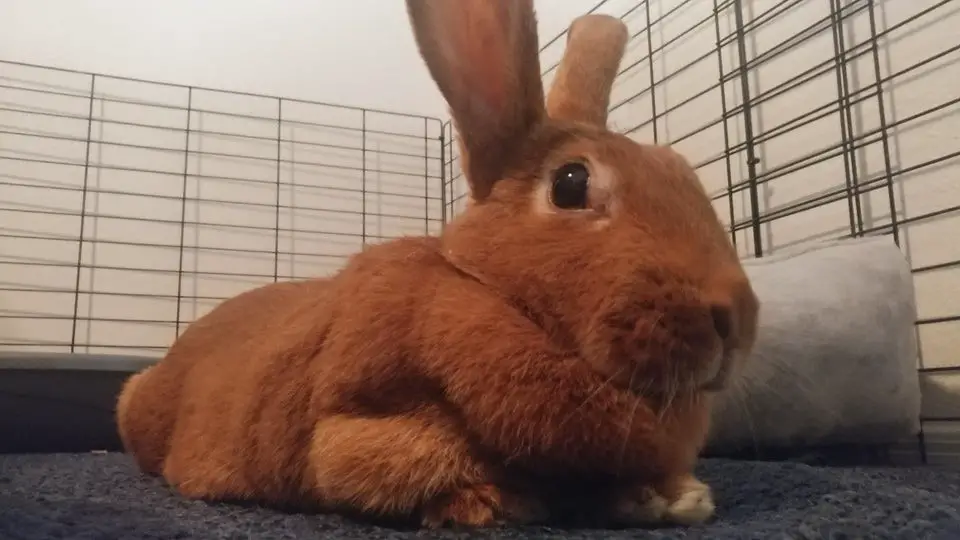
Commercial use
New Zealand rabbits were not incipiently reproduced to be a household pet; they were reproduced for their meat and fur. Rabbits are butchered at 8-12 weeks, and maturer bunnies are marketed as roasters. White rabbits are favored for wool since it’s more natural to stain. The rabbits with high qualities of hair are utilized to produce wool coats and fur decorations. The lower classes are employed to make felt bonnets and mitten fillings. New Zealand is generally applied as a meat bunny with a high pasture to meat proportion with slender bones and is rated one of the most desirable breeds for meat production. Production bunnies are served more protein (18-20% rather than the standard 16-18% for non-production rabbits), and frequently alfalfa hay.
Laboratory Testing
New Zealand bunnies are a popular option for laboratory examination because of their obedience and excellent wellness. Rabbits respond comparably to individuals to illnesses and remedies. This feedback enables them to be employed at medical labs, the U.S. Public Health building, university hospitals, and cancer research centers. New Zealand rabbits have been adopted to improve experiments and medicines for conditions like heart disease, cancer, tuberculosis, diphtheria, and diabetes. The impacts of food additives, special diets, cosmetics, and skin creams have additionally been examined on New Zealand rabbits.
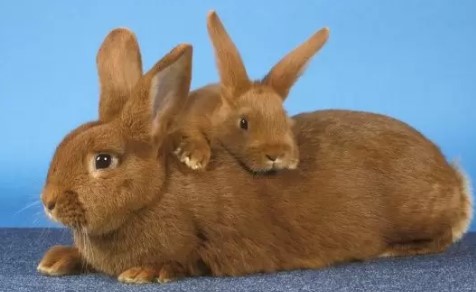
Facts
- The New Zealand Rabbit arose in the United States. The New Zealand Rabbit was produced in 1916 as a fur and meat creature.
- The Czech Red Rabbit is descended from the Red New Zealand rabbit.
- If somebody states rabbit stew (hasenpfeffer), the New Zealand Rabbit has a great probability of being on the table; it is one of the most well-known meat bunnies in society.
- New Zealand Rabbits can leap up to 91.4 cms (36 inches) and sometimes more powerful.
- New Zealand Rabbits are produced without hair, and its eyes shut. Half of the bunnies in the realm exist in North America. New Zealand Rabbits are content dwelling in groups. Cottontail Rabbits are the sole rabbit that does not reside subterranean.
- New Zealand Rabbits possess an exceptional sense of sight, smell, and hearing. Having eyes on the side of their head and being so huge, provides them almost 360 degrees perception, enabling them to detect predators from all courses. The New Zealand Rabbit can observe everything behind and in front of them and hold merely a tiny blind-spot in front of their snout.
- New Zealand Rabbits are extremely tidy mammals and will brush themselves and further one another. New Zealand Rabbits are crepuscular-(indicating they are most productive in daylight and nightfall) and make most of their filling during the night. New Zealand Rabbits on common rest for nearly 8 hours.
FAQs
How big do New Zealand rabbits get?
A New Zealand rabbit scales between 9 and 12 pounds, presenting this a giant breed. Their frames are broad, well-proportioned, and muscular, with a noticeable curvature in the spine.
Are New Zealand rabbits good pets?
New Zealand rabbits are an exceptionally great option for anyone new to rabbits or houses with kids. Because they are huge, they are not as fragile as small breeds, and their hardiness makes them easy to heed for.
Do New Zealand rabbits bite?
Luckily, New Zealand Rabbits do not snap almost as much as other breeds. This is in the role because any rabbit that did bite would beat the frying ban before breeding.
What can rabbits eat NZ?
Grass and hay must form the foundation (80%) of your rabbits’ nutrition. The remainder of your rabbits’ menu must be raw vegetables (15%) and a little number of grains (around 5%).
Can New Zealand rabbits live outside?
Outside, make them a fence that will retain them in a secure space, distant from predators, and without ways to wander off. In both cases, you will need to manage your bunny.
